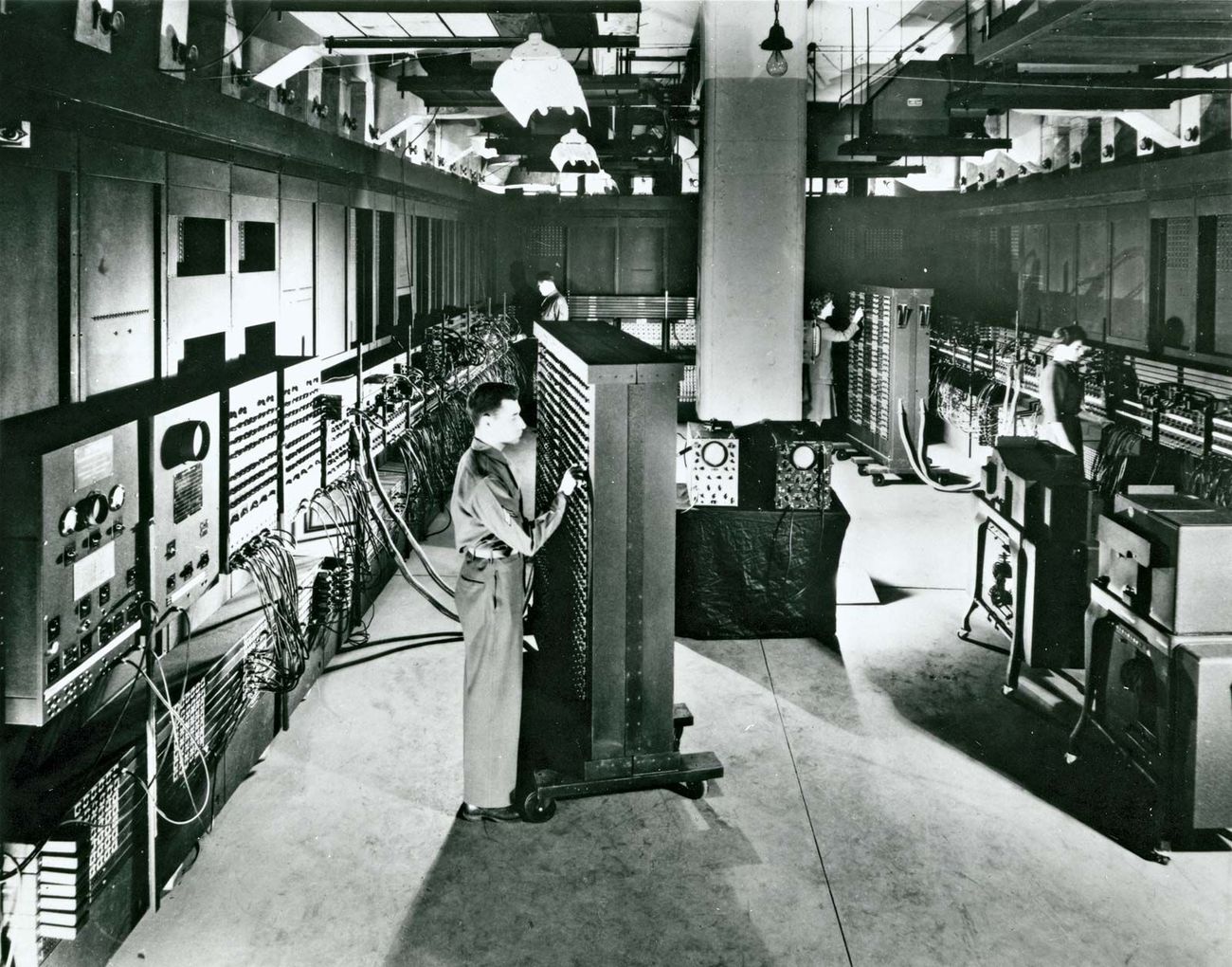
What was ENIAC and why is it significant? ENIAC, short for Electronic Numerical Integrator and Computer, was the world's first general-purpose electronic digital computer. Built during World War II, it was designed to calculate artillery firing tables for the United States Army. ENIAC's significance lies in its groundbreaking technology and impact on computing history. It could perform complex calculations much faster than any human or mechanical device at the time. Weighing over 30 tons and occupying 1,800 square feet, ENIAC used nearly 18,000 vacuum tubes. Its creation marked the dawn of the computer age, paving the way for modern computing. ENIAC's success demonstrated the potential of electronic computing, influencing future computer designs and innovations.
Key Takeaways:
- ENIAC was the first general-purpose electronic digital computer, weighing 30 tons and consuming enough electricity to power a small town. It paved the way for modern computing with its groundbreaking design and versatile applications.
- A team of brilliant minds, including the "ENIAC girls," worked on ENIAC, influencing future computers and advancing fields like meteorology and nuclear physics. Its legacy lives on in museums and as an IEEE Milestone.
21 Facts about ENIAC
The ENIAC (Electronic Numerical Integrator and Computer) was a groundbreaking machine that changed the course of computing history. Here are some fascinating facts about this pioneering computer.
What was ENIAC?
ENIAC was the first general-purpose electronic digital computer. It was designed to solve complex numerical problems and could be reprogrammed to tackle different tasks.
-
First of Its Kind: ENIAC was the world's first general-purpose electronic digital computer, marking a significant milestone in computing history.
-
Size and Weight: This massive machine weighed about 30 tons and occupied 1,800 square feet, roughly the size of a small house.
-
Components: ENIAC contained 17,468 vacuum tubes, 7,200 crystal diodes, 1,500 relays, 70,000 resistors, and 10,000 capacitors.
-
Power Consumption: It consumed about 150 kilowatts of electricity, enough to power a small town.
Who Built ENIAC?
The creation of ENIAC was a collaborative effort involving several brilliant minds and institutions.
-
Creators: John W. Mauchly and J. Presper Eckert, two American engineers, designed and built ENIAC at the University of Pennsylvania.
-
Funding: The U.S. Army funded the project during World War II to speed up artillery trajectory calculations.
-
Team Effort: A team of about 200 people, including engineers, mathematicians, and technicians, worked on the project.
How Did ENIAC Work?
ENIAC's operation was a marvel of engineering and ingenuity, involving complex processes and components.
-
Programming: It was programmed manually using plugboards and switches, a labor-intensive process that could take days.
-
Speed: ENIAC could perform 5,000 additions per second, a remarkable speed for its time.
-
Decimal System: Unlike modern computers that use binary, ENIAC used a decimal system for its calculations.
-
Memory: It had a very limited memory, capable of storing only 20 ten-digit numbers.
What Was ENIAC Used For?
ENIAC's versatility allowed it to be used for various applications beyond its initial military purpose.
-
Military Applications: Initially, it was used to calculate artillery firing tables for the U.S. Army.
-
Weather Prediction: ENIAC was later used for early weather prediction models, helping to advance meteorology.
-
Nuclear Physics: It played a role in calculations for the hydrogen bomb development.
-
Mathematical Problems: ENIAC solved complex mathematical problems, including those related to prime numbers and numerical integration.
Interesting Tidbits About ENIAC
Some lesser-known facts highlight the unique aspects and legacy of ENIAC.
-
Public Unveiling: ENIAC was publicly unveiled on February 14, 1946, capturing the world's attention.
-
Women Programmers: Six women, known as the "ENIAC girls," were among the first programmers, playing a crucial role in its operation.
-
Legacy: ENIAC's design influenced future computers, laying the groundwork for modern computing.
-
Decommissioning: It was decommissioned on October 2, 1955, after nearly a decade of service.
-
Preservation: Parts of ENIAC are preserved in museums, including the Smithsonian Institution and the University of Pennsylvania.
-
Recognition: ENIAC was named an IEEE Milestone in 1987, recognizing its historical significance in electrical engineering and computing.
The Legacy of ENIAC
ENIAC, the Electronic Numerical Integrator and Computer, changed the world of computing forever. Built during World War II, it was the first general-purpose digital computer. This massive machine, weighing 30 tons and using 18,000 vacuum tubes, could perform complex calculations much faster than any human. It paved the way for modern computers, influencing technology development for decades.
ENIAC's impact goes beyond its technical achievements. It showed the potential of electronic computing, leading to innovations in various fields like science, engineering, and business. The work of the brilliant minds behind ENIAC, including John Mauchly and J. Presper Eckert, set the stage for future advancements.
Understanding ENIAC's history helps us appreciate the rapid progress in technology. From room-sized machines to today's powerful smartphones, the journey of computing owes much to ENIAC's groundbreaking contributions.
Frequently Asked Questions
Was this page helpful?
Our commitment to delivering trustworthy and engaging content is at the heart of what we do. Each fact on our site is contributed by real users like you, bringing a wealth of diverse insights and information. To ensure the highest standards of accuracy and reliability, our dedicated editors meticulously review each submission. This process guarantees that the facts we share are not only fascinating but also credible. Trust in our commitment to quality and authenticity as you explore and learn with us.
